Beach vacations are often synonymous with relaxation, luxury, and picturesque scenery. However, not all beach destinations live up to their lavish reputation, especially when considering the potential risks and drawbacks associated with some of the world’s most expensive coastal getaways. While the allure of pristine beaches and exclusive amenities may seem irresistible, certain destinations come with hidden costs and inherent risks that may outweigh their perceived benefits. Here, we explore some of the costly beach vacations that may not be worth the risk.
Trafalgar Lighthouse Beach

Location: Cádiz, Spain
Why You Shouldn’t Travel: Rip current
Est. Cost of Visit: $145/day*
The beach derives its name from the lighthouse erected in 1860, a soaring structure standing at 34 meters in height. Ascending to its zenith to behold the panoramic view constitutes a cherished activity among tourists visiting the region. Situated in a seemingly tranquil locale within a region characterized by a notably warm climate, the beach spans approximately one mile in length and 50 meters in width. Its conditions oscillate between days of placid waters and those marked by turbulent seas. During such instances, the rip current poses a significant hazard to swimmers, rendering it one of the most perilous beaches in Spain.
Zipolite Beach – ‘Beach of Death’
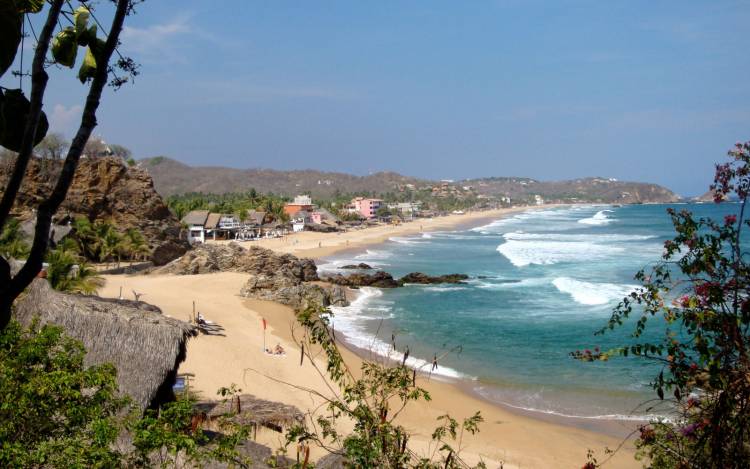
Location: Zipolite, Mexico
Why You Shouldn’t Travel: Strong ocean currents
Est. Cost of Visit: $83/day*
San Pedro Pochutla, hailed as the jewel of Oaxaca, stands as one of the 570 municipalities nestled within the region. Over time, its beach has garnered renown, particularly for its expansive 1.75 km nudist area and natural allure. The locale boasts a diverse array of hotels, bars, and restaurants, catering comprehensively to the needs of tourists. Maintaining a steady temperature ranging between 75 to 95 degrees Fahrenheit throughout the year renders it accessible for travel year-round. However, amidst its splendor, caution is warranted. Dubbed the “Beach of the Dead” in Zapotec, legend holds that it served as a burial ground for the town’s inhabitants in bygone eras. Presently, the primary peril lies in the subterranean sea currents, which have proven fatal to visitors on numerous occasions. Moreover, situated within hurricane risk zones, the beach faces additional environmental challenges. Perhaps its tumultuous past as a burial site lends credence to whispers of a curse lingering over its shores.
Schitovaya Bukhta Beach

Location: Schitovaya Bukhta, Rusia
Why You Shouldn’t Travel: Radioactivity and military base nearby
Est. Cost of Visit: $66/day*
Another beloved destination for adventure-seekers, this beach harbors both concealed and overt dangers. Firstly, obtaining special permissions is imperative for swimming, diving, or engaging in any water-related activity, owing to the nearby Russian military base that governs and conducts submarine operations in the area. Need further deterrents? The waters are tainted with radioactivity, posing lethal toxicity levels for the marine life inhabiting them. No amount of adrenaline-chasing can mitigate the risks inherent in this environment, rendering it unsuitable for wave pursuits.
Northern Territory

Location: Northern Territory, Australia
Why You Shouldn’t Travel: Box jellyfish
Est. Cost of Visit: $113/day*
A cursory internet search for images of Northern Territory beaches in Australia yields breathtaking results. Turquoise waters embrace white sands adorned with lush green vegetation, creating a picturesque paradise. Despite its allure, the presence of one of the world’s deadliest creatures, the sea wasp or box jellyfish, casts a shadow over this idyllic setting. Predominantly inhabiting Australian waters, particularly those of the Northern Territory, the box jellyfish is translucent and emits a faint glow in darkness. Sporting 70 tentacles that can extend up to 80 centimeters in length, its sting is often fatal. Inflicting a pain akin to being seared with a hot iron, the venom swiftly infiltrates the bloodstream, inducing shock and eventual cardiac arrest.
Skeleton Coast
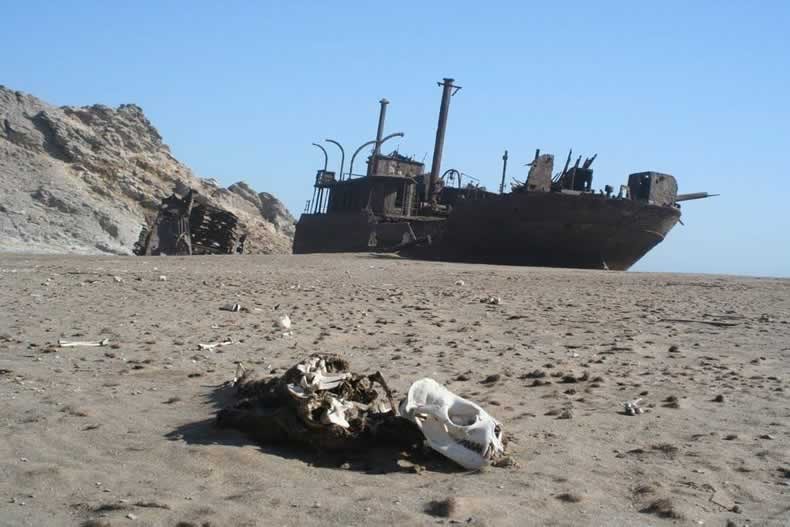
Location: Skeleton Coast, Namibia
Why You Shouldn’t Travel: Strong winds, thick fog, Benguela current
Est. Cost of Visit: $79/day*
The vistas of Skeleton Coast evoke post-apocalyptic imagery: remnants of ships and skeletal remains protruding from a rugged desert backdrop, enveloped in a dense fog generated by the cold Benguela current. Stretching for kilometers on end, the landscape is marked by an eerie silence devoid of any semblance of civilization. Renowned for its shipwrecks, this coast marks the terminus of the world’s oldest desert as it meets the Atlantic Ocean. The region exudes an aura of peril, underscored by its waters which harbor eleven species of sharks, while its shores are prowled by predators like lions and hyenas.
Uttakleiv Beach
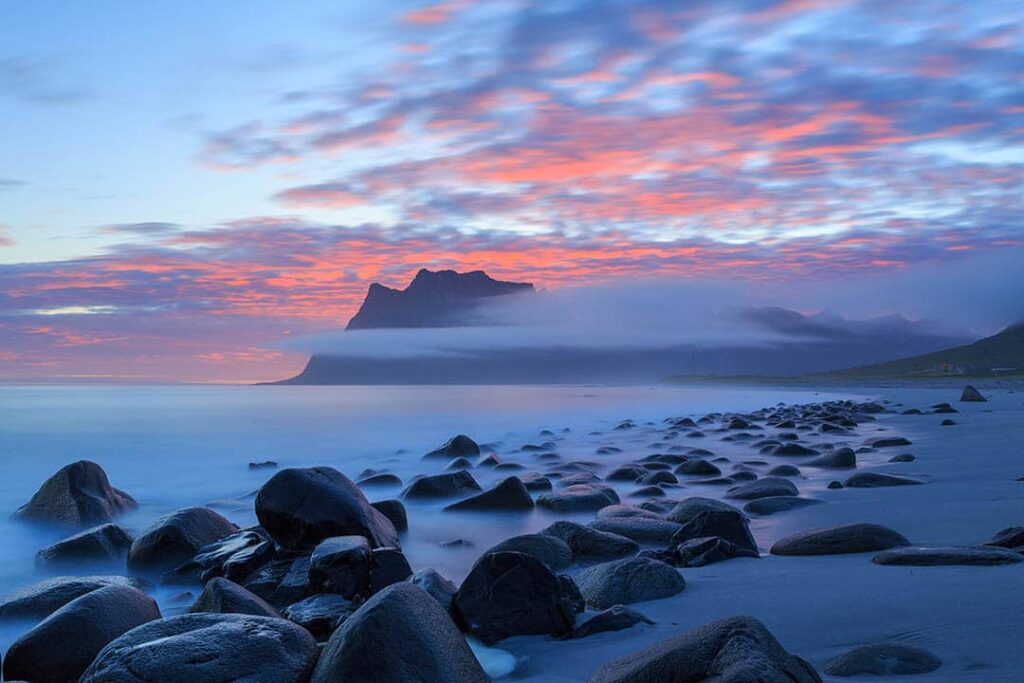
Location: Lofoten Islands, Norway
Why You Shouldn’t Travel: Low water temperatures
Est. Cost of Visit: $117/day*
The Lofoten Islands in Norway rank among the top destinations for adventure enthusiasts worldwide. Renowned for its stunning landscapes and captivating natural phenomena, the region stands out as one of the premier spots globally for witnessing the Northern Lights. The interplay of low temperatures and extended daylight periods during certain seasons accentuates the vibrant colors and hues, rendering these beaches among the most picturesque on the planet. Despite their allure, caution is advised regarding water activities, particularly at Uttakleiv Beach. Situated north of the Arctic Circle, the water temperature remains around seven degrees Celsius for the majority of the year. Consider exploring alternative beaches to ensure a safe and enjoyable experience amidst the breathtaking surroundings.
Playa de los Muertos (Death Beach)
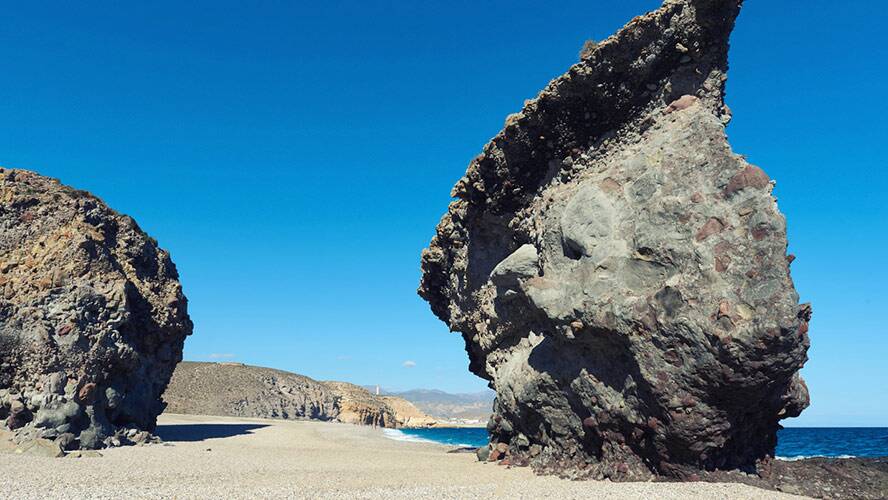
Location: Carboneras, Spain
Why You Shouldn’t Travel: Strong currents and swells
Est. Cost of Visit: $94/day*
The somber moniker of this beach derives from its historical association with the regular washing ashore of corpses brought in by the waves. Sailors unfortunate enough to be shipwrecked often succumbed to the relentless ocean currents, lending credence to the ominous name of Playa de los Muertos, despite its seemingly pristine and transparent waters. Stretching over a kilometer in length and boasting a linear coastline, the beach harbors dangers that render it unsuitable for leisurely vacations. Its irregular shoreline poses a significant risk, potentially submerging individuals unexpectedly upon entry. Moreover, the sandy seabed coupled with strong currents and formidable waves complicates the return journey to shore, making it a hazardous prospect for beachgoers.
Gansbaai – ‘Great White Shark Capital’
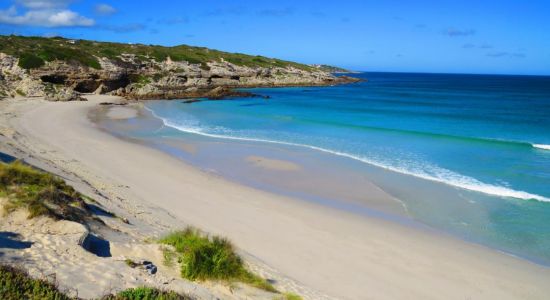
Location: Gansbaai, South Africa
Why You Shouldn’t Travel: Sharks
Est. Cost of Visit: $91/day*
South Africa offers a diverse tapestry of natural wonders, from vibrant coastal waters juxtaposed against imposing rocky formations to verdant landscapes adorned with stretches of pristine white sand beaches. However, Gansbaai beach diverges starkly from the serene imagery often depicted online. Despite its popularity among divers drawn to its array of underwater activities and enthusiasts keen on whale watching, it has earned the moniker “The capital of the great white shark.” This fishing village finds itself surrounded by a dense population of these formidable creatures, turning it into a focal point for adventurous tourists who brave cage dives into its waters. Our recommendation? Exercise caution and refrain from entering the water, opting instead to explore the myriad other attractions this area has to offer.
New Smyrna Beach
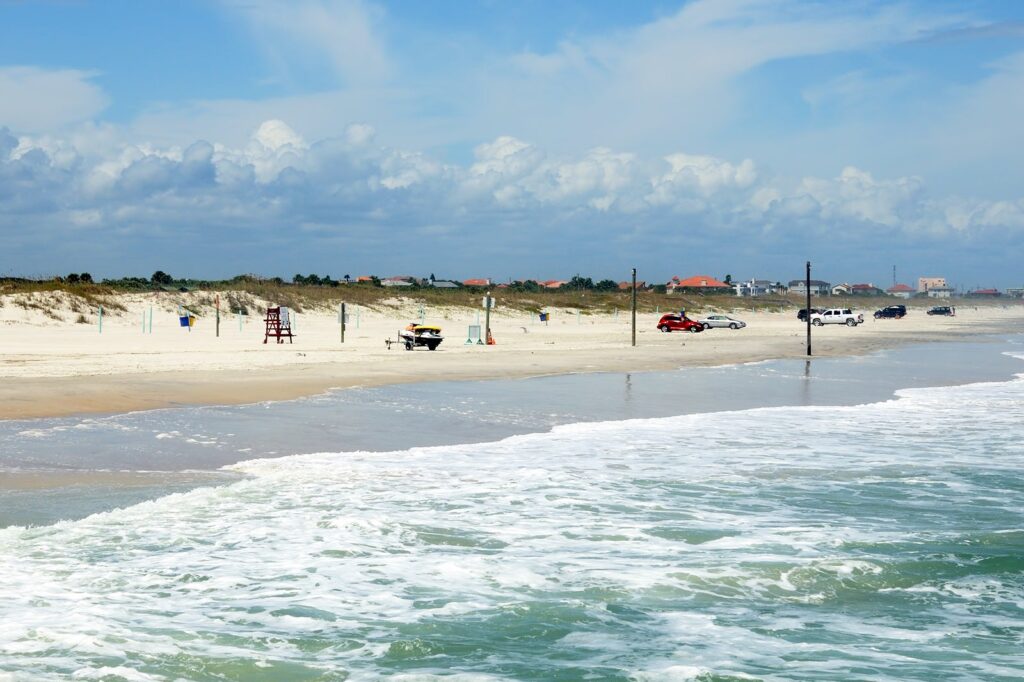
Location: Volusia County, Florida, USA
Why You Shouldn’t Travel: Sharks
Est. Cost of Visit: $170/day*
New Smyrna Beach carries an unofficial title that may send shivers down your spine: “the capital of sharks.” This designation is well-founded considering it holds the unfortunate distinction of being the location with the highest frequency of shark attacks worldwide. Statistics reveal that even if visitors swim in its waters and emerge unscathed, they have likely come within three meters of a shark during their time there. Situated just an hour from Orlando within Volusia County, New Smyrna Beach hosts a diverse array of shark species, including grey sharks, tiger sharks, hammerheads, and bull sharks, among others. Despite the evident risks associated with visiting this beach, it continues to attract over 10 million tourists annually, leaving each individual to draw their own conclusions regarding its allure.
Playa de Maho

Location: Philipsburg, Saint Martin
Why You Shouldn’t Travel: Airport nearby
Est. Cost of Visit: $112/day*
Playa de Maho is renowned for its close proximity to the Princess Juliana International Airport, situated on the Dutch side of the island. With the third-highest volume of annual passengers in the entire Caribbean, the airport experiences significant air traffic. Adjacent to the beach, airplanes soar overhead at a mere distance of approximately 25 meters above Maho, offering curious tourists a remarkable opportunity to witness 747s in close proximity. The influx of tourists drawn to this thrilling yet perilous activity is substantial, to the extent that local beach establishments often display flight schedules. Despite the allure, experts caution against standing directly behind planes during takeoff, as the powerful winds emanating from the turbines pose a serious risk. Tragically, such daring endeavors have resulted in fatalities among tourists in the past.
Although expensive beach vacations offer promises of luxury and indulgence, they may not consistently provide the memorable and enriching experiences travelers anticipate. Prior to investing in a costly coastal getaway, it is imperative to assess the potential risks and drawbacks linked to the destination. Through meticulous evaluation of factors like environmental sustainability, infrastructure, safety measures, and overall value for money, travelers can make informed choices that prioritize their well-being and contentment. Ultimately, the genuine value of a beach vacation transcends its price tag, encapsulating the quality of the experience and the enduring memories forged throughout the journey.